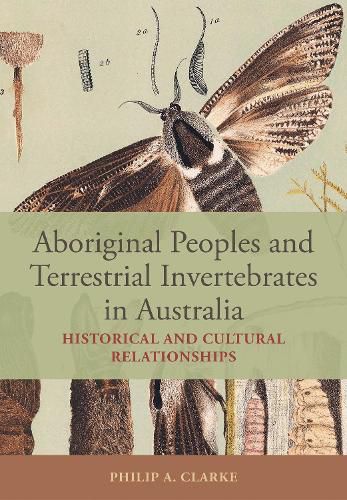Readings Newsletter
Become a Readings Member to make your shopping experience even easier.
Sign in or sign up for free!
You’re not far away from qualifying for FREE standard shipping within Australia
You’ve qualified for FREE standard shipping within Australia
The cart is loading…






Aboriginal peoples have deep connections with Australia's terrestrial invertebrates, going back millennia. This book focuses on these historical and cultural relationships, describing the role of insects and other arthropods as totemic ancestors and spirit beings. It also explores Aboriginal nomenclature, foraging techniques and the use of land-based arthropods and molluscs as food, medicine and for making artefacts.
Through the lens of ethnoentomology, Philip Clarke examines the cultural significance of invertebrates, highlighting their role in shaping Aboriginal identities and their interactions with the unique Australian environment, blending scientific and Indigenous sources. By taking a historical perspective, Aboriginal Peoples and Terrestrial Invertebrates in Australia examines the gaps between the knowledge systems of Indigenous peoples and Western science, to encourage further collaboration and acknowledgement in the future.
This is a companion work to the author's successful book Aboriginal Peoples and Birds in Australia.
$9.00 standard shipping within Australia
FREE standard shipping within Australia for orders over $100.00
Express & International shipping calculated at checkout
Aboriginal peoples have deep connections with Australia's terrestrial invertebrates, going back millennia. This book focuses on these historical and cultural relationships, describing the role of insects and other arthropods as totemic ancestors and spirit beings. It also explores Aboriginal nomenclature, foraging techniques and the use of land-based arthropods and molluscs as food, medicine and for making artefacts.
Through the lens of ethnoentomology, Philip Clarke examines the cultural significance of invertebrates, highlighting their role in shaping Aboriginal identities and their interactions with the unique Australian environment, blending scientific and Indigenous sources. By taking a historical perspective, Aboriginal Peoples and Terrestrial Invertebrates in Australia examines the gaps between the knowledge systems of Indigenous peoples and Western science, to encourage further collaboration and acknowledgement in the future.
This is a companion work to the author's successful book Aboriginal Peoples and Birds in Australia.